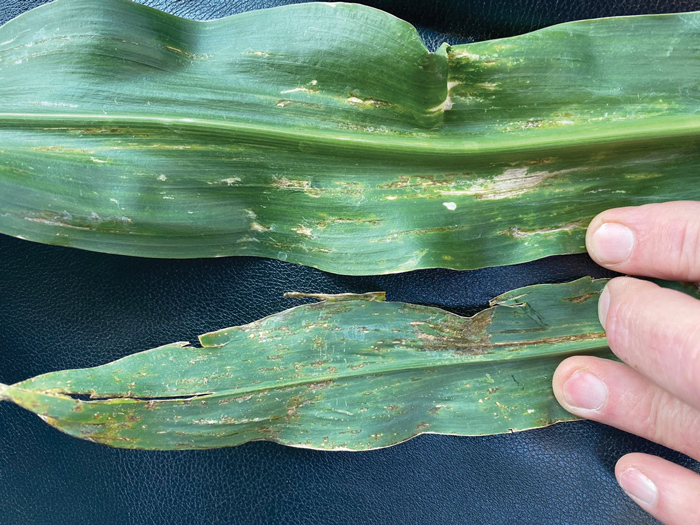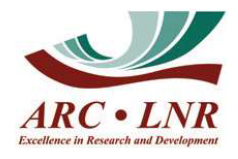
ARC-Grain Crops, Potchefstroom
 Dr Henry Njom,
Dr Henry Njom, ARC-Grain Crops, Potchefstroom
 Pieter Bruwer, agronomist:
Pieter Bruwer, agronomist: Langfontein Seeds (Eastern Highveld and Northern KwaZulu-Natal)
Bacterial leaf streak (BLS) is becoming a serious problem in the Amersfoort/Wakkerstroom area. An outbreak was reported during the 2020/2021 maize growing season on the farm of Ghini Greyling, who noticed the lesions.
Early in the 2021/2022 season it was also reported in Dundee. Symptoms of BLS were already being noticed on young plants in the Dundee area under irrigation. However, the occurrence of the disease on seedlings is surprising, suggesting that BLS might be seed-borne. Symptoms observed on this field (Photo) are typical of this disease.
BLS is a foliar disease of maize caused by the bacterium Xanthomonas vasicola pv. zeae. BLS was first reported in South Africa in 1949 and can generally be found in the warm and dry maize production areas such as the North West Province, Northern Free State and south-west areas of Gauteng during certain favourable seasons.
The disease can occur sporadically and environmental conditions play a major role in disease intensity. Symptoms on maize plants can be observed at all plant growth stages, but are most severe from just prior to and after flowering. Initial symptoms appear as dark streaks on the leaves. These enlarge to form narrow yellow streaks, which begin to show necrotic lesions within the lesion. Streaks can be 2 mm to 3 mm wide and vary greatly in length. These lesions reduce the photosynthetic ability of the leaves, which inevitably results in yield losses.

Photo: Pieter Bruwer
Pieter Bruwer, agronomist at Langfontein Seeds (Eastern Highveld and Northern KwaZulu-Natal), is busy collecting samples to confirm if infections are due to BLS and to determine the areas infected. Just before flowering, a complete survey of this area will be done by Dr Henry Njom (ARC-Grain Crops, Potchefstroom) with the assistance of Pieter. During this survey, isolates will be collected as often as possible together with supporting information such as cultivar, GPS coordinates, damage severity and climatic weather (rainfall and temperature).
These leaf samples will be brought to the laboratory for the pathogen to be isolated. The disease will be confirmed using PCR and compared to one another after sequencing to determine any isolate variation in isolates collected. Further studies will be done to screen various maize genotypes for resistance to the disease and to ascertain whether the pathogen is seed-borne.
Anyone observing such symptoms from any maize-growing area is welcome to contact Dr Bradley Flett at 082 920 9733 or Dr Henry Njom at 071 096 4382 at ARC-Grain Crops, Potchefstroom.





























